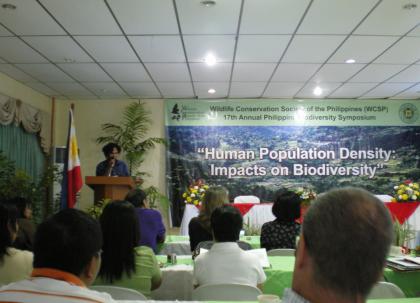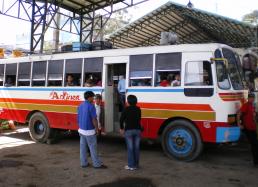4: Sharing Conservation Concerns
I've just returned to Mt. Pulag from the annual meeting of the Wildlife Conservation Society of the Philippines. When I began conducting research and training in the Philippines in 1981, people who shared my interests in biodiversity and conservation research, training, and management—essentially, anyone with professional interests in wild animals and their habitats—had no way to meet and talk with (and learn from) other people in the Philippines who shared those interests.
That was a serious problem, especially for grad students, young faculty, and conservationists, since conferences allow for the give-and-take that greatly improves the quality of everyone’s work. Additionally, the lack of communication between organizations led to feelings of competition, which made it even more difficult to make progress on conservation issues that require broad cooperation.
After complaining about this for several years, I worked with some friends from Silliman University and the DENR’s Protected Areas and Wildlife Bureau (utilizing a grant from the MacArthur Foundation) to bring together the people who share interests in these topics for a three-day Wildlife Conservation Symposium. We had 23 people from eight institutions, plus some undergrads as an audience. Everyone agreed that it had been a great way to learn from each other and break down some of the old walls between institutions, and that we should continue to meet each year.
The symposium has been held every year since 1992, and today, the society that we formed has over 350 members, and the annual meetings, held in a different part of the country each year, have 125 to 200 participants. I am now an Emeritus Member of the Board of Directors and am greatly amused to be addressed by the members as Tatay, which translates roughly as “grandfather.” I’m sure that this must refer to my prematurely gray hair.
The meeting this year was held at the Visayas State University on the west coast of Leyte. Riding on the back of a motorcycle, I left the Ranger’s Station at Mt. Pulag early in the morning. The driver was less than half my age and not much more than about half my weight, and the motorcycle was a 100-cc Honda (I think). For an ordinary rider this might have been fine, even on what is almost certainly the worst road I’ve been on in the Philippines—but it had rained that night, so the road was not only very steep and often filled with rock rubble, but covered with slick mud where there was no rubble.
We shot down that mountain in record time, wiping out only once. I got off to walk twice, but mostly I hung on for dear life. When I returned after the conference, I began hearing stories spread by the driver about his trip down the mountain with a giant Americano who carried a huge backpack, didn’t know how to balance the motorcycle, and was so huge that the bike’s brakes wouldn’t work. I’ll bet that within a few more months, I'll have reached legendary proportions.
The conference was very good. For the first time, we dealt with a topic that people usually tip-toe around: the official theme was “Human Population Impacts to Biodiversity” (see the above photo.) The Philippines has about 92 million citizens in an area the size of New Mexico, so it's very densely populated, and the growth rate is very high. I gave a paper (with Danny Balete and Eric Rickart as co-authors) entitled “The impact of increasing human population and immigration on Philippine mammals.”
The quality of the presentations overall has improved each year, and the 34 spoken papers and around 30 posters were the best that I've seen at any of our conferences. Topics included biodiversity surveys of national parks; global impacts of human population on conservation; population growth and deforestation; management of protected areas in densely populated areas; conservation and education in elementary schools; genetics and evolution of Philippine frogs; distribution patterns of land snails; conservation needs of dragonflies; mammal surveys in previously unknown areas; the use of aquatic invertebrates as indicators of water quality; bird diversity in urban greenlands; geographic distribution patterns of birds and the need for additional protected areas; and dozens of others. At the end of the meeting, we agreed to meet in the mountains of northern Luzon (on campus at Univ. Philippines - Baguio) in 2009, with the theme “Biodiversity and Conservation in Philippine Highlands.”
It took two days for me to get back to Mt. Pulag via the same string of airplanes, buses, and jeepneys that I took initially to get there (successfully avoiding motorcycles). Sweetpea Veluz, from the Philippine National Museum, accompanied me so that she could participate in the last segment of field work (see the photo below). In the morning, we'll hike from the Ranger Station up to the new camp that Danny and the crew have established at about 2,750 meters in elevation, at the margin of the mossy forest and grasslands. We can hardly wait to learn what lives in the subalpine grassland!
More soon,
Larry





